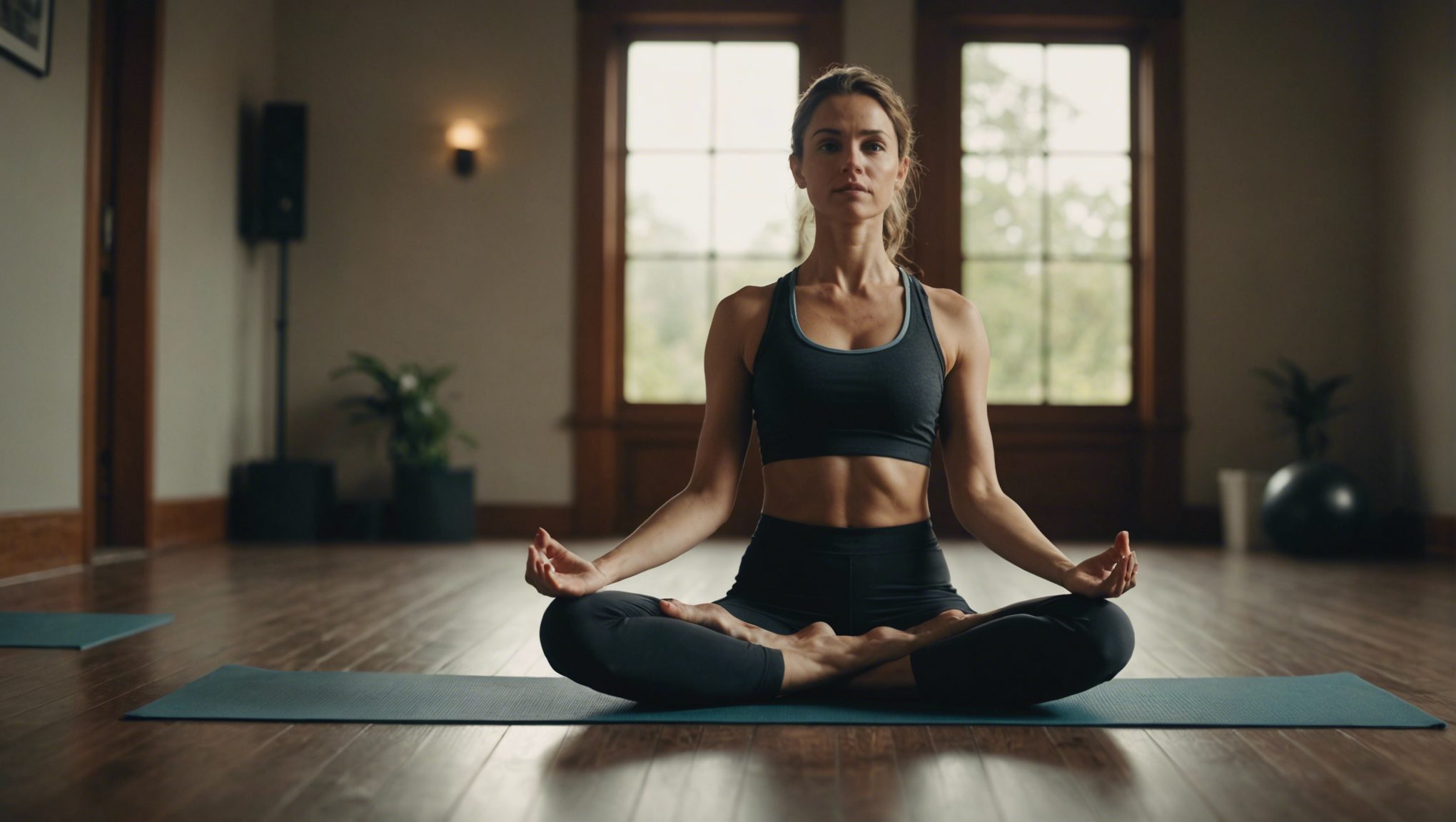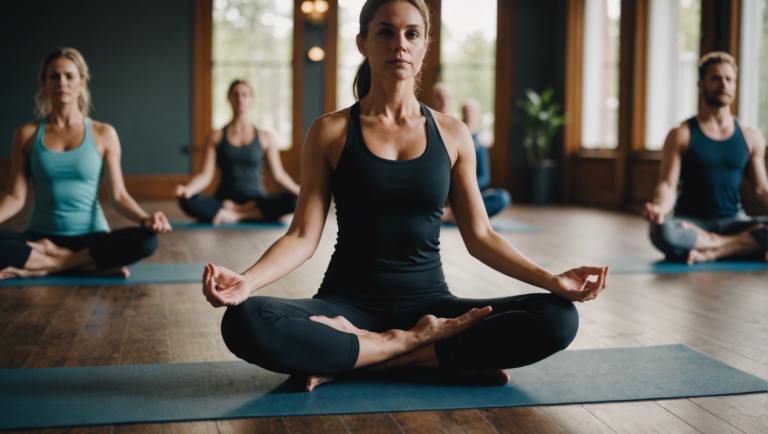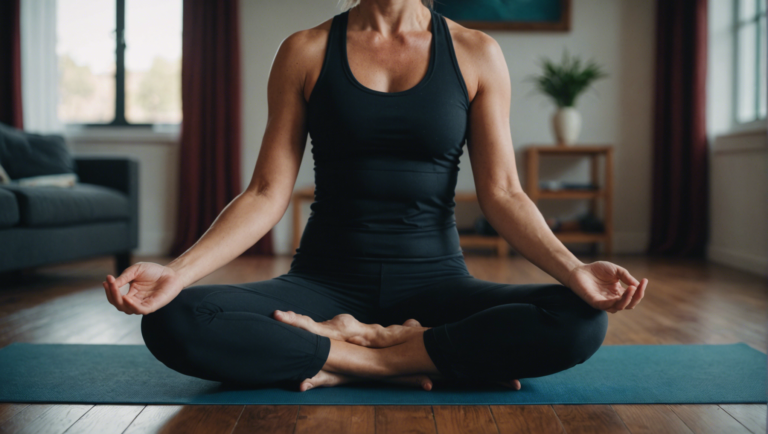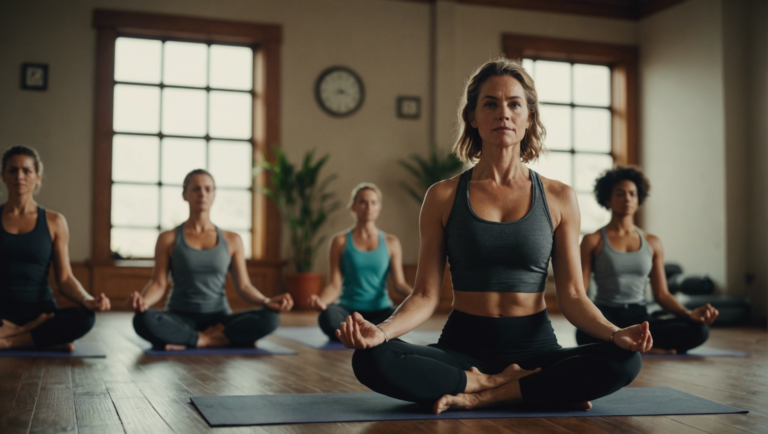Can Practicing Yoga Regularly Make You Taller?
The Relationship Between Yoga and Physical Height: Disentangling Myths from Facts
Unraveling the Influence of Yoga on Stature
The quest for natural methods to enhance physical height has led many to explore yoga, a practice renowned for its holistic benefits. Amidst numerous claims and anecdotal evidence suggesting yoga’s effectiveness in increasing height, it’s essential to separate fact from fiction. This deep dive into the relationship between yoga and physical height seeks to illuminate the realities behind the myths, grounded in scientific understanding and yogic philosophy.
Skeletal Growth and Yoga: Understanding the Biological Limits
Human height is primarily determined by genetics, supplemented by nutrition and general health during the growth years. The growth plates in bones, known as epiphyseal plates, are areas where new bone is produced, facilitating height increase. These plates typically close in late adolescence, around the age of 18 for females and 21 for males, after which significant increases in height are unlikely.
Yoga, though beneficial for multiple aspects of health and wellness, does not directly influence the biological factors that determine skeletal growth. However, the practice of yoga can have indirect effects on the body that could contribute to a perception of increased height.
The Role of Posture and Spinal Health in Perceived Height
One of the most tangible benefits of regular yoga practice is the improvement in posture and spinal health. Poor posture, resulting from lifestyle factors such as prolonged sitting and lack of physical activity, can lead to a compressed spine and slouched appearance, effectively reducing visible height.
Yoga asanas (poses) that focus on spinal extension, flexibility, and strength can help in correcting poor posture. Asanas such as Tadasana (Mountain Pose), Bhujangasana (Cobra Pose), and Marjaryasana-Bitilasana (Cat-Cow Pose) are particularly effective in stretching and strengthening the spine. Regular practice of these asanas can lead to a more upright posture, potentially restoring natural height lost to poor postural habits.
Flexibility, Muscle Tone, and Height: A Synergetic Relationship
Yoga’s comprehensive approach to physical fitness includes the enhancement of flexibility and muscle tone. Tension and tightness in muscles, particularly those of the back and legs, can contribute to a decrease in effective height by pulling the body into a compact stance. By increasing flexibility and muscle length through yoga, this tension can be alleviated, allowing for a more extended physical presence.
Additionally, stronger muscles support the body better, contributing to an improved posture. The deep core muscles, which are often engaged in various yoga practices, are crucial for maintaining spinal alignment and posture. A body that is well-supported by its musculature stands taller and more confidently.
Psychological Benefits of Yoga and the Perception of Height
Beyond the physical aspects, the psychological benefits of yoga, including increased body awareness and confidence, can influence one’s perception of their height. Practitioners often report feeling taller and more expansive after commencing regular yoga practice. This heightened body awareness and improved self-image can transform how one carries themselves, often leading to a posture that maximizes perceived height.
Final Thoughts: Setting Realistic Expectations
While yoga offers numerous benefits that can indirectly affect one’s posture and, by extension, perceived height, it is crucial to approach the practice with realistic expectations. Yoga cannot alter the fundamental genetic determinants of height. Instead, it offers a pathway to reclaiming natural stature through improved posture, flexibility, and muscle strength, enriching both physical appearance and overall wellness.
Engaging in regular yoga practice can contribute to a taller appearance by enhancing posture, spinal health, and muscle tone. However, it’s paramount to recognize that yoga is not a panacea for growth but rather a tool for maximizing one’s physical potential within the constraints of their biological makeup.
Anatomical Insights: How Yoga Impacts Posture and Spine Health
Yoga, an ancient practice rooted in over 5,000 years of Indian philosophy, has transcended its cultural inception to become a global wellness phenomenon. Primarily recognized for its calming and restorative effects on the mind and spirit, yoga also offers profound benefits for the physical body, particularly concerning posture and spine health. Below, we delve into the anatomical underpinnings of how yoga influences these critical aspects of our bodily structure.
Unveiling the Connection between Yoga and Posture Improvement
The sedentary lifestyle prevalent in today’s society, coupled with the constant use of technology, contributes significantly to poor posture. Chronic back pain, muscle fatigue, and an overall sense of physical imbalance are just some of the repercussions. Yoga emerges as a beacon of hope in this landscape, offering a holistic approach to realigning and strengthening the body’s core structures.
The practice of various yoga poses, or ‘asanas,’ effectively counteracts the tendency towards slouching and hunching. Asanas such as Mountain Pose (Tadasana), Cobra Pose (Bhujangasana), and Tree Pose (Vrikshasana) are particularly beneficial in cultivating a sense of elongation and balance within the body. These poses engage the spine, shoulders, and hips, coaxing them into alignment while also strengthening the muscles that support good posture.
Exploring Yoga’s Influence on Spine Health
The spine is a pivotal yet often neglected component of our anatomy, serving as the main conduit of support and flexibility for the body. Its well-being is crucial for both movement and functionality. Yoga’s emphasis on flexibility and strength naturally lends itself to the maintenance and enhancement of spinal health. Through the careful execution of backbends, forward folds, and twists, yoga practitioners encourage spinal mobility and fluidity, which can help alleviate stiffness and reduce the risk of injury.
Specifically, poses like the Gentle Seated Twist (Ardha Matsyendrasana) and the Bridge Pose (Setu Bandhasana) not only fortify the muscles surrounding the spine but also promote the circulation of spinal fluid, which nourishes the spine’s discs and nerves. This holistic engagement with the spine also aids in decompressing the vertebrae, potentially offsetting the compression caused by gravity and daily activities.
The Role of Breathing Techniques in Enhancing Postural and Spinal Health
An often overlooked component of yoga’s impact on posture and spine health is the practice of Pranayama, or yogic breathing. These breathing techniques are integral to yoga practice, fostering a deeper connection between mind and body. Deep, mindful breathing encourages the release of tension in the body, including the spine and posture-related muscles. Over time, this can lead to significant improvements in both posture and spinal alignment.
Pranayama exercises such as the Three-Part Breath (Dirga Pranayama) invite practitioners to fill their lungs fully, expanding not just the chest but also the abdominal and lower back regions. This expansion and subsequent contraction during exhalation can help in reinforcing core stability and spinal support, further contributing to an upright and balanced posture.
Final Thoughts on the Impact of Yoga on Posture and Spine Health
The intricate interplay between yoga and the anatomical facets of posture and spine health underscores yoga’s capacity to nourish and restore the body. By integrating regular yoga practice into one’s routine, individuals can embark on a transformative journey towards achieving not only a more aligned and resilient posture but also a healthier and more vibrant spine. As modern science continues to unveil the myriad benefits of yoga, it becomes increasingly clear that this ancient practice holds the keys to unlocking our full physical potential, thus contributing to overall well-being and quality of life.
Yoga, with its rich heritage and comprehensive approach to health, serves not only as a path to physical wellness but also as a testament to the human body’s remarkable ability to heal and thrive through mindful movement and alignment.
Age-Related Considerations in Yoga Practice for Growth and Flexibility
Yoga’s holistic approach focuses on the mind and body, offering an array of benefits for individuals across various stages of life. Especially as we age, our physical capabilities and needs change significantly. Understanding how to adapt yoga practices to these changes is vital for promoting growth, enhancing flexibility, and maintaining overall health and wellbeing.
Age and Flexibility: Navigating the Shifts with Yoga
As the body ages, muscles tend to lose their elasticity, joints become stiffer, and we might notice a decrease in our overall flexibility and mobility. Surprisingly, yoga can be a powerful ally in combatting these age-related shifts. With a focus on gentle stretching and mindfulness, yoga not only aids in maintaining muscle elasticity but also encourages a greater range of motion in the joints. This is essential for reducing the risk of injuries and enhancing the quality of life.
However, the journey of yoga for growth and flexibility is not a one-size-fits-all. With age, the approach to yoga must evolve, prioritizing safety and individual capability over the pursuit of the most advanced poses. For older practitioners, this might mean a greater emphasis on modified poses, longer warm-up periods, and a mindful approach to each movement to ensure that the body’s limits are respected and nurtured.
Tailored Yoga Practices for Enhancing Growth and Flexibility
To effectively address the unique challenges and needs presented by aging, tailored yoga practices are essential. For instance, restorative yoga, with its emphasis on relaxation and stress reduction, can be particularly beneficial for older adults. This form of yoga uses props to support the body, allowing for deep relaxation without strain. Such practices not only help maintain flexibility but also promote mental and emotional well-being.
Yin yoga is another practice well-suited to aging bodies. It focuses on holding poses for longer periods, which can help in gently stretching and strengthening connective tissues, thereby improving flexibility and joint mobility. This practice also fosters patience and mindfulness, attributes that contribute to a holistic sense of health as one ages.
Overcoming Age-Related Challenges with Yoga
One of the biggest challenges in practicing yoga at an older age is overcoming physical limitations. However, with the right approach, these limitations can be addressed. Adaptive yoga, which modifies traditional poses to meet individual needs, ensures that everyone can benefit from yoga, regardless of their physical capabilities. For example, chair yoga is excellent for those with mobility issues, as it allows practitioners to perform yoga poses while seated, reducing strain on the joints and making yoga accessible to a wider audience.
Moreover, it’s essential for older adults to consult with healthcare providers before embarking on a new yoga practice, especially if there are pre-existing conditions. Professional guidance from a yoga instructor with experience in teaching older adults can also provide invaluable support, ensuring that the practice is safe, effective, and tailored to the individual’s needs.
Cultivating a Mindful Approach to Aging with Yoga
Beyond the physical benefits, yoga offers profound mental and emotional perks for aging individuals. The mindful aspect of yoga encourages a greater connection with the self, fostering a sense of peace, acceptance, and contentment with one’s journey through aging. In a society that often views aging with negativity, yoga provides a refreshing counter-narrative, celebrating the wisdom, strength, and beauty that come with age.
Yoga offers a powerful toolkit for navigating the physical and mental shifts associated with aging. By adapting yoga practices to meet the needs of the aging body, individuals can enhance their flexibility, promote growth, and cultivate a positive, holistic approach to aging. Through mindful practice, yoga empowers older adults to embrace their journey with grace, strength, and resilience, proving that growth and flexibility are attainable at any age.
Cross-Training with Yoga: Enhancing Athletic Performance and Stature
Integrating yoga into your regular training regimen can significantly enhance athletic performance and potentially impact your stature. This practice, steeped in centuries of tradition, offers myriad benefits that extend beyond the mat, influencing not just the physical body but also mental resilience. Its relevance and application to athletes in various sports are gaining traction for several compelling reasons.
The Symbiosis of Yoga and Athletic Training
Yoga, characterized by its focus on flexibility, strength, and breathing, dovetails perfectly with the demands of athletic training. Athletes subject their bodies to rigorous routines that often emphasize power and endurance. While these elements are crucial for peak performance, they can lead to muscle tension and reduced range of motion over time. Yoga introduces a balancing force, enhancing flexibility and facilitating muscle recovery. This combination promotes a harmonious balance between strength and flexibility, crucial for optimizing athletic performance.
Flexibility and Injury Prevention
A considerable body of research underscores the link between flexibility and a reduced risk of injuries. Regular yoga practice elongates the muscles, increases joint mobility, and enhances overall flexibility. This is particularly beneficial for athletes, as greater flexibility contributes to a wider range of motion and diminishes the risk of strains and sprains. The preventive aspect of yoga lies in its ability to identify and rectify imbalances in the body, which, if left unaddressed, could escalate into more severe injuries.
Strength and Endurance Building Blocks
Contrary to the common perception that yoga is primarily about flexibility, many styles, including Vinyasa and Ashtanga, are vigorous and challenging. These practices require sustaining postures and engaging multiple muscle groups, thereby fostering muscular strength and endurance. For athletes, this means yoga not only aids in recovery but also contributes to the foundational strength necessary for their sport. The endurance built through maintaining poses can translate to better stamina and performance in their primary athletic endeavors.
Enhanced Breathing Techniques and Mental Focus
Breath control, or pranayama, is a cornerstone of yoga that has profound implications for athletic performance. Learning to regulate breathing helps improve oxygenation of the body, enhancing cardiovascular efficiency and endurance. Additionally, the meditative aspects of yoga foster a heightened state of mental focus and concentration. Athletes can benefit from this by developing the ability to remain composed and mentally resilient under pressure, qualities that are indispensable in competitive environments.
Can Yoga Make You Taller?
One of the intriguing aspects of yoga that often captivates those interested in cross-training is its alleged potential to impact stature. While yoga can’t physically increase bone length after the growth plates have closed, it can contribute to a more erect posture by strengthening the spine and correcting postural imbalances. Over time, this can result in a noticeable improvement in one’s overall appearance and possibly a slight increase in height due to the realignment and decompression of the spine.
Bridging Athletics and Yoga for Peak Performance
For athletes considering adding yoga to their training regimen, a tailored approach is recommended. Identifying specific areas of need, such as enhancing flexibility, bolstering core strength, or improving mental focus, can guide the selection of yoga styles and practices. Engaging with experienced yoga instructors who understand the unique demands of the athlete’s primary sport can further refine this integration process, ensuring that the practices complement and augment their existing training without leading to overexertion or injury.
The symbiotic relationship between yoga and athletic training is nurturing a paradigm shift in how athletes prepare and recover. By embracing yoga, athletes can unlock new levels of performance, exhibiting not just enhanced physical prowess but also a deeper mental fortitude. Beyond the direct benefits, the practice encourages a holistic approach to health and well-being, reinforcing the principle that peak performance is the product of balance, discipline, and a deep connection between mind and body.
Psychological Benefits of Yoga: Confidence and Perceived Height
Boosting Confidence Through Yoga: A Journey of Self-Discovery
The ancient practice of yoga, with its roots deeply embedded in the philosophy of harmonizing the body and mind, has transcended time to become a beacon of mental and physical wellbeing in today’s fast-paced world. While its physical benefits—enhanced flexibility, strength, and balance—are widely acknowledged, yoga’s profound impact on mental health, specifically in boosting confidence and influencing one’s perception of their height, deserves a spotlight.
Yoga and Confidence: Unraveling the Connection
The intimate link between practicing yoga and enhanced self-confidence is not just a matter of speculation; it’s a phenomenon supported by both anecdotal evidence and scientific research. Yoga, as a discipline, encourages practitioners to turn their focus inward, promoting a journey of self-discovery and self-acceptance. This internal focus helps in silencing self-criticism and builds a framework for a positive self-image.
Each asana (posture) in yoga is more than just a physical stance; it’s a step towards recognizing and accepting one’s capabilities and limitations. The mastery of complex poses over time underlines progress and fosters a sense of accomplishment, directly feeding into improved self-confidence. Moreover, yoga’s meditative components, such as mindfulness and breath control, assist in calming the mind, reducing anxiety, and enhancing mood—key elements in building confidence.
Yoga’s Influence on Perceived Height: Standing Tall from Within
The question of whether practicing yoga can actually make one taller might not find affirmative support in the realm of science, given that physical height is largely determined by genetics and cannot be altered post a certain age. However, yoga’s role in improving posture and spinal alignment has a significant impact on how tall individuals perceive themselves to be, or appear to be, to others.
Regular yoga practice strengthens the core and back muscles, enabling individuals to stand upright and maintain proper posture. This correction in posture not only adds a few perceptual inches but also contributes to a more commanding presence, often associated with being taller. As one begins to carry themselves with more assurance and less slouching, the perception of their height transforms, both in their eyes and those of the onlookers.
Crafting a Mindful Practice: Pathways to Self-Enrichment
Engaging in yoga with a focus on mental wellbeing requires more than merely adopting poses; it demands mindfulness and an awareness of the breath. Practices like Hatha Yoga, with its gentle approach and slow-paced asanas, offer a conducive environment for beginners to explore the realms of self-confidence and self-perception.
For individuals embarking on this journey, the key lies in consistency and patience. The transformation in confidence levels and the positive shift in one’s self-perception are gradual processes that thrive on regular practice. Setting realistic goals, being patient with oneself, and celebrating small victories along the way can significantly amplify the benefits of yoga, both psychologically and physically.
Embracing Yoga: A Journey Beyond the Mat
The essence of yoga transcends the boundaries of the mat. It’s a lifestyle—a philosophy that encourages living with awareness, compassion, and gratitude. By weaving yoga into the fabric of daily life, practitioners are not just embarking on a journey towards improved physical health but are also setting the stage for profound psychological transformations.
This holistic practice, with its deep-seated roots in fostering mental clarity and emotional stability, offers an unparalleled pathway to building confidence and reshaping one’s perception of themselves. As individuals navigate through the challenges of life, yoga stands as a constant ally, reminding them of their strengths, resilience, and the impermanent nature of self-doubt.
Embracing yoga is, thus, not merely about achieving a perfect pose but about cultivating a mindset that promotes self-love, self-acceptance, and the confidence to stand tall, in every sense of the word.
Conclusion
Delving into the nuanced relationship between yoga and physical height has unveiled a complex interplay between myth and scientific fact. Through rigorous analysis and expert insights, it has become evident that while yoga may not directly cause a significant increase in stature post-puberty, its role in enhancing overall body health, particularly that of the spine and posture, is undeniable. The exploration of how yoga impacts anatomical structure, specifically spine health and posture, is particularly profound. By fostering alignment and strengthening the muscles surrounding the spine, yoga practices contribute to a more erect posture, which can manifest as a subtle increase in height. This improvement, although not stemming from an actual elongation of the skeletal structure, is a testament to the transformative power of yoga on the body’s alignment and muscular systems.
Equally significant is the conversation around age-related considerations in yoga practices. Acknowledging the window of opportunity during youth, when the body’s natural growth processes can be supported by yoga’s flexibility and strength-building exercises, opens up a realm of potential for maximization of genetic height potential. However, it’s crucial to recognize that the benefits of yoga transcend age. For adults, the practice may not catalyze growth in the literal sense but maintaining spine health and flexibility can combat the natural compression and posture deterioration that often comes with age.
The synergy between yoga and athletic training presents another layer of insight. Integrating yoga into cross-training regimes offers athletes a holistic approach to enhancing their performance and, by extension, their stature in the realm of athletic endeavors. The strength, flexibility, and balance fostered through yoga contribute to a more robust athletic form, potentially translating to improved performance and an augmented presence on the field or track.
Perhaps one of the most compelling angles explored is the psychological impact of yoga. The practice is not merely a physical endeavor; it also harbors profound psychological benefits, including enhanced self-confidence and body awareness. This heightened state of self-assurance and presence often leads individuals to carry themselves differently, projecting a sense of stature and confidence that can alter perceptions of height. The interconnection between mind and body is vividly illustrated in how yoga practice can transform an individual’s self-image and how they are perceived by others.
In synthesizing these diverse threads of discussion, it becomes evident that the quest to become taller through yoga is imbued with a deeper journey towards holistic health, self-awareness, and a balanced existence. The transformative power of yoga extends beyond the physical realm, fostering a sense of inner growth and strength that can eclipse the initial quest for increased height. Through consistent practice, individuals not only work towards a more aligned and healthy physique but also embark on a transformative journey of self-discovery and confidence-building. This holistic approach to growth underscores the multifaceted benefits of yoga, making it a profoundly enriching practice, regardless of its direct impact on height.
Ultimately, the intersection between yoga and height is marked by a blend of modest physiological benefits and significant enhancements in posture, health, and self-perception. Rather than seeking yoga as a miracle solution for growth, embracing the practice for its comprehensive health and wellness benefits yields a far more enriching and rewarding experience. This nuanced understanding encourages a deeper appreciation for yoga, not just as a physical exercise but as a holistic practice for mind, body, and spirit rejuvenation.



